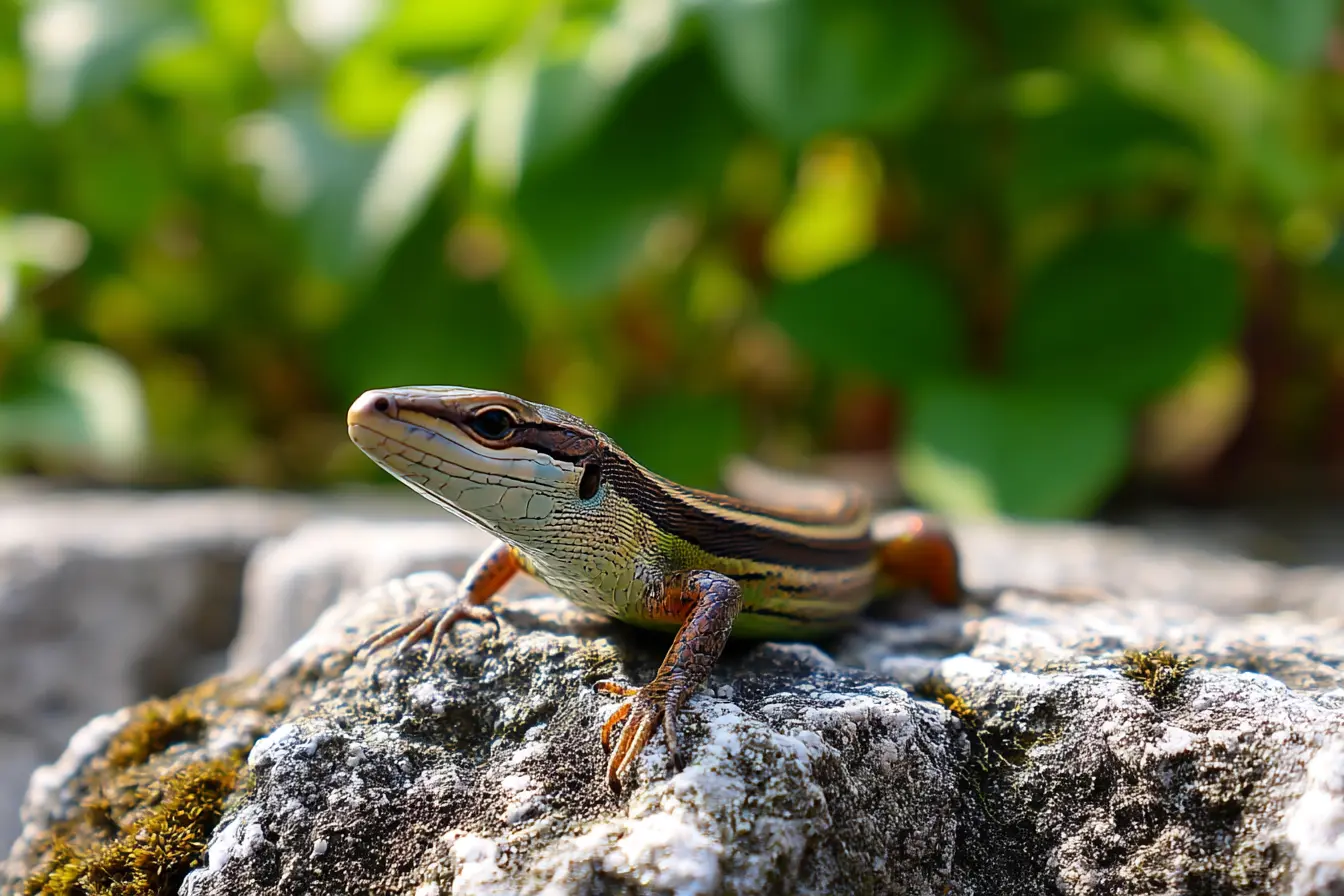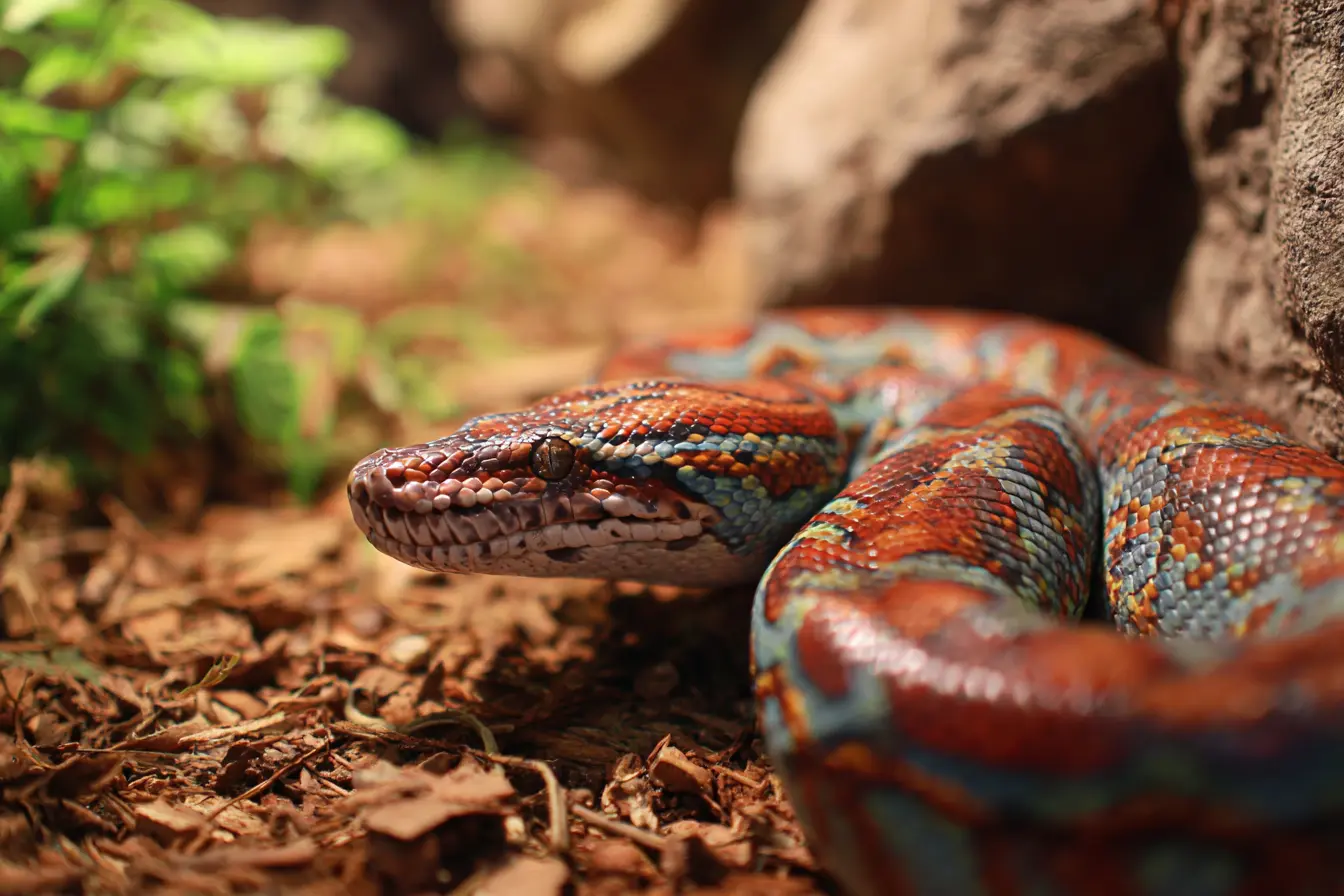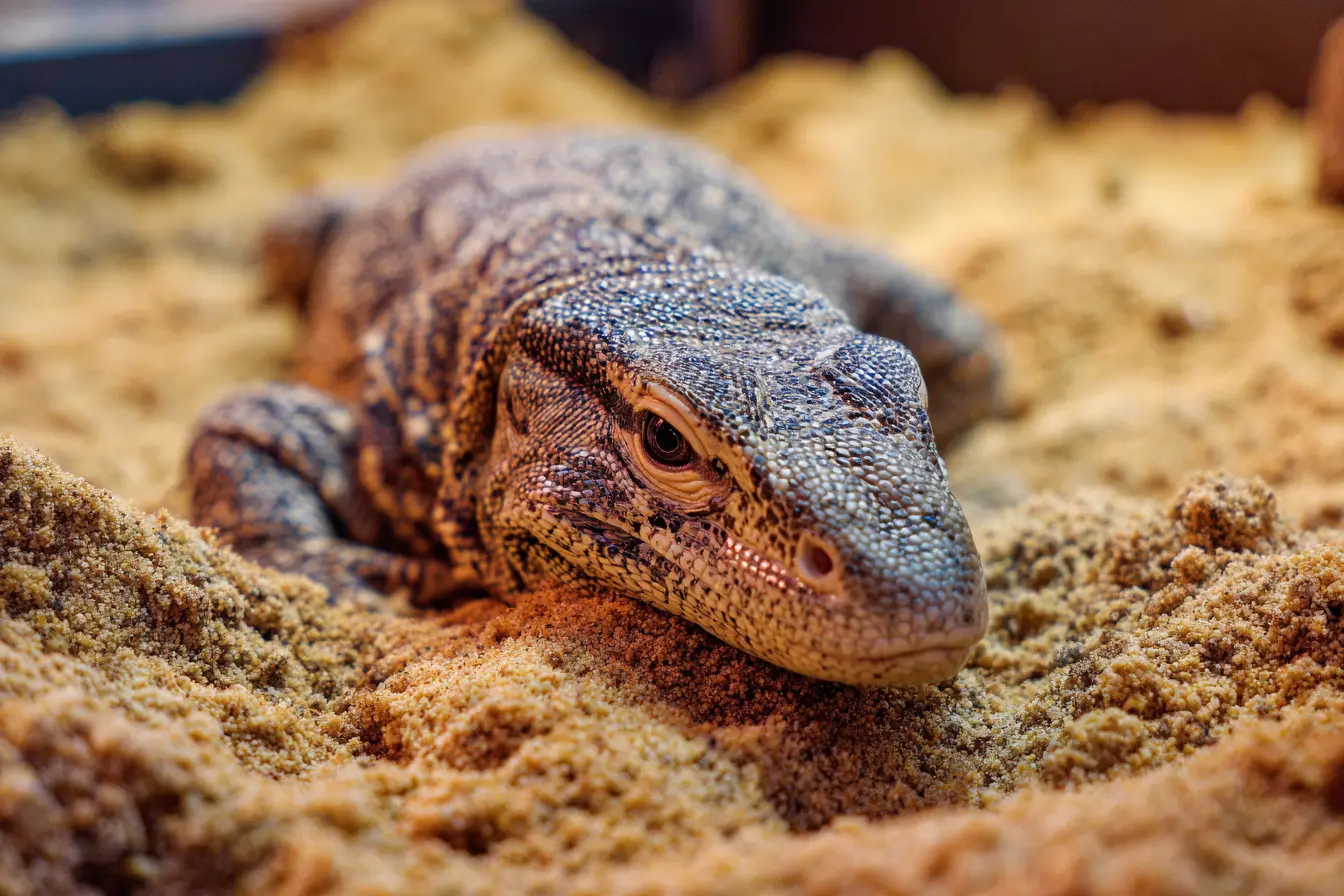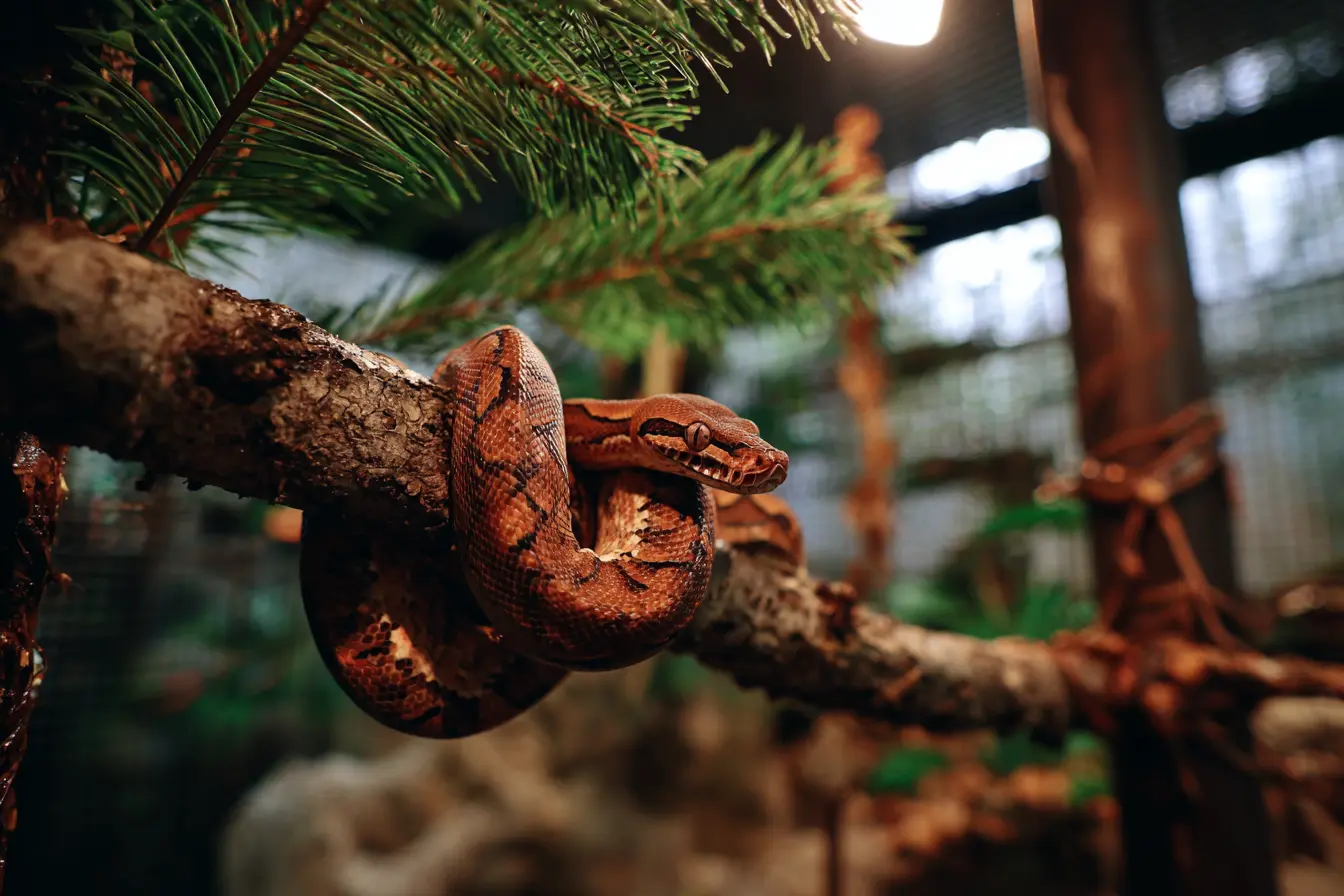
Asian Long-Tailed Lizard: The Agile Acrobat of the Forest Floor
The Asian long-tailed lizard (Takydromus sexlineatus), also known as the grass lizard or six-lined long-tailed lizard, is one of the most agile and captivating small reptiles found in Asia. Famous for its extraordinarily long tail, often more than three times the length of its body, this energetic species is a delight to observe.
Native to the warm, grassy habitats of Southeast Asia, this slender lizard is an excellent choice for reptile enthusiasts who enjoy active, fast-moving species. With the right care, the Asian long-tailed lizard can thrive in captivity and display its natural grace and agility.
Origins and Natural Habitat
The Asian long-tailed lizard ranges across much of Southeast Asia, including Thailand, Vietnam, Cambodia, Malaysia, Indonesia, and parts of southern China. It inhabits grasslands, forest edges, rice paddies, and areas near water, where tall vegetation provides both shelter and hunting grounds.
These lizards are diurnal, spending their days basking in the sun or darting swiftly through grass in pursuit of insects. Their long, whip-like tail aids balance and agility, allowing them to leap and climb with remarkable ease. When threatened, they often dive into vegetation or water to escape predators.
Appearance and Temperament
Physical Traits
- Size: Body length of 6–8 cm, with a tail extending up to 20–25 cm—one of the longest relative tails of any lizard species
- Colouration: Typically olive-brown or greenish with six distinct pale lines running along the body, giving rise to the name “six-lined lizard”
- Build: Slender body, long limbs, and a laterally compressed tail designed for speed and balance
- Eyes: Large and expressive, providing excellent vision for spotting movement and prey
Behaviour and Temperament
Asian long-tailed lizards are extremely fast and alert. They are social by nature and can often be kept in small groups, provided the enclosure is large enough and there are multiple basking and hiding areas.
While they are not aggressive, they are easily startled and prefer minimal handling. With time, they become less skittish and will often approach food confidently once they feel secure in their environment.
Housing Requirements
These lizards require a warm, spacious, and well-planted terrarium that mimics the open grasslands and edge habitats of their natural range.
Enclosure Size
- For a pair or trio: Minimum 90 cm x 45 cm x 60 cm
- For groups: Larger enclosures are essential to reduce territorial stress
A tall terrarium with both vertical and horizontal climbing opportunities works best. Glass or mesh-fronted enclosures with good ventilation are ideal.
Heating and Temperature Gradient
- Basking spot: 32–35°C
- Ambient daytime temperature: 26–29°C
- Night-time: Can drop to around 22°C
Use a basking lamp to provide a hot spot and a thermostat to maintain a stable gradient. These lizards thermoregulate frequently, moving between warm and cooler zones throughout the day.
Lighting and UVB
Full-spectrum UVB lighting (5–7%) is essential for vitamin D3 synthesis and calcium absorption. Provide 10–12 hours of daylight using a UVB bulb combined with bright white lighting to replicate tropical sunlight.
They are highly visual and thrive under bright, naturalistic lighting conditions.
Humidity and Water
Maintain moderate humidity between 50–70%. Mist the enclosure lightly each morning to replicate dew and provide hydration. A shallow water dish should always be available for drinking and occasional soaking.
Good airflow is vital. Excessive humidity can lead to respiratory problems, while dryness can cause shedding issues.
Substrate and Furnishings
- Substrate: Coconut fibre, soil and sand mix, or fine bark substrate that retains some moisture
- Decor: Provide tall grasses, live or artificial plants, cork bark, and branches for climbing
- Hides: Include several hides at different temperature zones
These lizards love vertical and horizontal surfaces for basking and security. Dense planting gives them confidence and reduces stress, allowing for more natural behaviour.
Diet and Feeding
Asian long-tailed lizards are insectivores with a fast metabolism. A varied diet is essential for their health and energy.
Feeding Schedule
Feed daily or every other day, depending on age and activity level.
Food Items
- Crickets
- Small roaches
- Mealworms and waxworms (occasional treats only)
- Silkworms or fruit flies for juveniles
All insects should be gut-loaded and dusted with calcium and vitamin supplements. Provide calcium with D3 two to three times a week and a multivitamin once weekly.
Feeding Tips
Offer food in a shallow dish or let prey roam the enclosure to stimulate natural hunting instincts. These lizards are fast feeders and will chase moving insects eagerly.
Handling and Behaviour
Asian long-tailed lizards are best admired rather than handled frequently. They are delicate, and their tails, though long and elegant, can detach if grabbed or stressed.
When handling is necessary (for enclosure maintenance or veterinary checks):
- Move slowly and gently
- Allow the lizard to walk onto your hand rather than being picked up suddenly
- Avoid touching the tail, as it may drop as a defence mechanism
With patience, they can learn to take food from tweezers and become more comfortable with human presence.
Common Health Concerns
Tail Loss
These lizards can drop their tails if threatened. While it will regrow, the new tail is shorter and duller in colour.
Shedding Problems
Low humidity may cause incomplete sheds, especially around the toes and tail tip. Mist lightly and provide rough surfaces for rubbing.
Nutritional Deficiencies
Lack of UVB or improper supplementation can cause metabolic bone disease. Ensure consistent lighting and a balanced supplement routine.
Parasites
Wild-caught specimens may carry internal or external parasites. Purchase from reputable breeders and quarantine new arrivals.
Lifespan and Breeding
Asian long-tailed lizards typically live 5–8 years in captivity with good care.
Breeding is straightforward under optimal conditions. Males display by head-bobbing and chasing females during the breeding season. Females lay 2–6 small eggs in moist substrate or under vegetation. Incubation at 28–30°C lasts around 60–70 days, producing tiny, fast-moving hatchlings that begin feeding on fruit flies or pinhead crickets soon after hatching.
Observation and Enrichment
These lizards are active, diurnal hunters and a joy to watch. Provide enrichment such as:
- Rearranging decor periodically
- Introducing safe climbing branches and foliage
- Offering prey in different locations to encourage exploration
Their energy and agility make them one of the most entertaining small lizards to keep, especially in well-designed, naturalistic enclosures.
Conclusion
The Asian long-tailed lizard is a true marvel of balance and agility. A sleek, swift reptile that thrives in the warmth and sunlight of its tropical homeland. Its graceful movements, social nature, and captivatingly long tail make it a standout species for dedicated reptile enthusiasts.
Although they are delicate and not suited for frequent handling, these lizards reward observant keepers with vibrant, natural behaviours and lively activity. With proper lighting, heat, and a safe, enriching environment, the Asian long-tailed lizard will flourish, adding a touch of wild energy and elegance to any reptile collection.
Related Vets
Vets near you
Speciality vets
- Aquatics vet specialists
- Birds vet specialists
- Camelids vet specialists
- Cats vet specialists
- Cattle vet specialists
- Deer vet specialists
- Dogs vet specialists
- Equines vet specialists
- Exotic vet specialists
- Goats vet specialists
- Pigs vet specialists
- Poultry vet specialists
- Sheep vet specialists
- Small Mammals vet specialists
- Wild vet specialists











